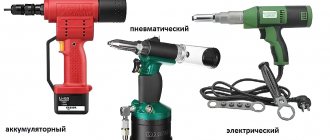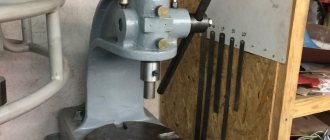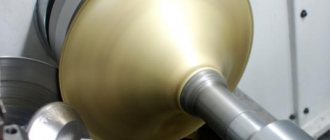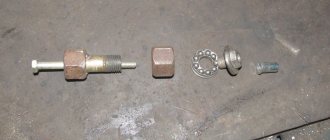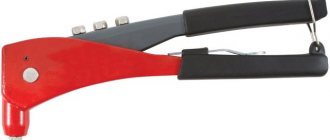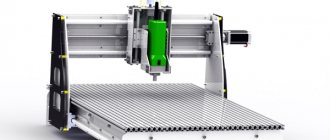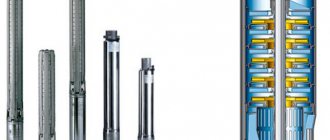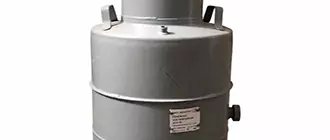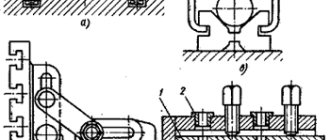When riveting, press the handle of the riveter with one hand or two, it all depends on the type of tool (one-handed or two-handed). Make several movements with the handle, stop working when the protruding leg of the fastener comes off. During the work process, the following subtleties are taken into account:
When different models are considered, the diameter of the rivet body is first taken into account. If the fastener is massive, characterized by a large cross-section of the rod, use a more powerful tool. This need is due to the fact that you will have to put a lot of effort into the work process. Simple hand tools can be used to install rivets of minimal diameter. If you are deciding how to choose a device for installing rivets, consider 2 types:
The riveter is presented in 2 versions, differing in design and power: one-handed, two-handed. The latest model of hand tools is reinforced. It can be used to fasten metal with large rivets. For comparison, a one-handed riveter is designed to work with rivets with a diameter of up to 5 mm. The two-handed version copes with fasteners whose size reaches 6.4 mm. With its help you can perform large volumes of work.
Both types of riveter are often equipped with a rotating head. With the help of such a tool, fasteners are installed in hard-to-reach places. The head of the manual riveter rotates 360°. For comparison, simple models are equipped with a fixed head; they differ in price. The rotary manual riveter represents the group of the most expensive tools. When choosing, take into account the type of fastener and material, which will allow you to do the job efficiently. You also need to know the thickness of the workpiece joint.
Principle and features of the device
The operating principle of such devices is based on the transmission of force from the lever to the head. When a fastener is inserted into a hole, it is deformed under the influence of a manual riveter. As a result, the rivet remains on both sides of the material. To understand how the tool works, you need to study the range of fasteners. Rivets for manual riveters exist in 2 versions:
- monolithic;
- tubular.
The first option is used less frequently, since more advanced analogues have appeared - pistons or tubular fasteners. The monolithic version resembles wire. When it is inserted into the hole of the workpiece, under the influence of force, the rod is compressed and acquires a flattened shape on both sides. The operating principle of a manual riveter with pistons (hollow rivets) is different. You can find exhaust and threaded pistons. Such fasteners are a very reliable method of joining metal workpieces.
How to use a manual riveter correctly?
First of all, marking the workpieces is done. Without this, it will not be possible to connect the parts correctly. A hole is drilled according to the markings, the size of which had to be made 1 mm larger than the diameter of the rivet so that the fastener fits freely into it. If a hidden fastening is planned, you need to flare the hole. Then the head of the fastener secured with a manual riveter does not protrude much above the surface of the part. It will be recessed into the metal.
If a professional riveter is used, how to work with it? First of all, you need to find sleeves of different diameters on the surface of the tool. With their help, you can install fasteners of several sizes. Then you prepare the manual riveter with your own hands. Part of the fastening element (the one with the rod) is installed in the head; the head is located at the point of future fastening.
The rod should protrude at least 1 mm above the metal surface. If a manual riveter with a rotating head is used, adjust the tool. The movable structural element is installed in the desired position. Check the accuracy of the position of the tool relative to the markings on the metal surface. The manual riveter must fit snugly against the head installed in the hole of the workpiece. Only in this case can you obtain high quality fastening.
When riveting, press the handle of the riveter with one hand or two, it all depends on the type of tool (one-handed or two-handed). Make several movements with the handle, stop working when the protruding leg of the fastener comes off. During the work process, the following subtleties are taken into account:
- The length of the fastener depends on the thickness of the workpiece.
- To strengthen the connection, fasteners made of the same material as the parts being connected are used.
- The work is carried out with safety glasses and gloves, as the legs of the rivets may fly off.
- It is recommended to use a manual riveter equipped with a container for collecting fastener legs. Then the level of safety at the work site will increase: pieces of metal will not fly apart.
If there is too much clearance between the fastener and the workpiece, the quality of the fastener will deteriorate.
- It is necessary to firmly attach the joints to be connected and secure them.
- Drill a hole of such a diameter that it is a couple of millimeters larger than the diameter of the rivet.
- The rivet is inserted into this hole.
- A head is screwed onto the riveter, which corresponds in diameter to the rod.
- Then the riveter is pressed onto the rivet up to the sides of the body, the handles are compressed. In this case, the rod should come off. If this does not happen, the operation should be repeated.
What is a manual riveter
Riveters are these types of hand tools that are used to connect two metal workpieces up to 10 mm thick. The main purpose of the tool is to provide a permanent connection of sheet metal. The connection of metal sheets occurs through the through-mounting method. This tool is used when it is impossible to use welding and threaded connectors. Structurally, the tool has the shape of pliers and consists of the following components:
- Handle - sets the mechanism in motion by applying physical force of a person
- Clamping mechanism, which comes in two types - pull-out and threaded
- Head - the fixing part on which the consumable element is attached
This is a simple device that allows you to quickly and permanently connect sheet metal. Riveters are not only manual, but also pneumatic, electric and battery-powered, but the first type of tool is more popular. This is due to a number of advantages, the main ones being affordable price, ease of use and no need to use additional equipment.
Pneumatic, electric and battery-powered devices are more expensive and are intended to be operated by specialists. The main advantage of pneumatic, electric and battery-powered devices is that they do all the work, so the operator does not need to exert any effort. The relevance of their use arises in the case of using large diameter rivets.
This is interesting!
Manual riveters are also called riveters. They come in two types, and to find out what differences they have, let’s look at their parameters.
What types are there?
Electric, battery, pneumatic.
However, they are not as popular as manual ones. The point is that it's overpriced. And although they essentially do all the work for you, buyers are still not ready to go completely electric.
The manual riveter is more understandable to people. It is easy to use and affordable.
The first three types are more suitable for avid specialists.
Or in the case when large diameter rivets are used.
Threaded riveter or nut riveter - its pros and cons
This is a special type of riveter, which is designed to work with threaded rivets. This type of tool provides a more reliable connection, and also allows it to be further strengthened through the use of bolts. The threaded connection ends up being permanent. The hole after the connection has an internal thread. The operating principle of threaded riveters is based on the fact that a threaded rivet is screwed onto the tool head (rod or threaded part). After this, a rivet attached to the tool is inserted into the hole, and the handles are compressed. When the handles are compressed, creasing or flaring occurs on the opposite side of the riveting, resulting in the formation of a head.
The design of the threaded riveter is shown in the photo. This type of tool is classified as powerful, and therefore the larger the size of the rivet, the more effort the operator must exert to make the connection. The advantages of such devices include high quality connections, which can be strengthened with a bolted element. In addition, the advantage is the ability to use rivets of different sizes, which also affects the quality of the connection. Such instruments have more disadvantages, and they manifest themselves due to the following factors:
- High cost of the tool: more than 2,500 thousand rubles
- The need to apply great physical effort, which increases depending on the diameter of the riveting
- Low connection speed, since the rivet must first be screwed onto the threaded tip of the tool, and after connection, the device must be unscrewed
- The high cost of not only the tool, but also the rivets
It is rational to choose a threaded riveter only when it is necessary to ensure a reliable connection of sheet steel, as well as in the presence of large diameter holes. The presence of holes at the joints allows the resulting structure to be fastened.
Design and characteristics
For work, manual models of riveters are most often used. In appearance they resemble ticks. This tool consists of five main parts:
- The handle is a power lever, with its help the user also operates the tool.
- The body is a frame that is necessary for support during a force action.
- The head is the working part on which the rivet used to connect the workpieces is attached.
- Working bushing and collet jaws. These two elements allow the rivet shaft to be secured after the handles are compressed. Additionally, collet jaws allow you to pull the rod out of the sleeve. As a result of these manipulations, a riveted ring is formed.
- A spring is a device that is used to remove the core from the head.
The quality of the riveter's work and the ability to process certain types of materials are influenced by the basic specifications of the tool. Therefore, when choosing a riveter, more attention is paid to the following technical characteristics of the device:
- Weight and overall dimensions. The ease of use of the tool and the ability to work with materials of a certain thickness depend on them.
- Handle length. The longer it is, the less force the user will need to apply during operation.
- Case material. It is mainly made from aluminum, steel or a durable metal alloy.
- Handle coatings. The handles of the riveters are covered with durable plastic with threads on the outer part, or they are provided with rubber pads that prevent the tool from slipping in the hand.
- Supported rivet type and diameter. Riveters use pull-out or threaded fasteners made of aluminum, stainless steel or technical steel.
Exhaust view of the riveter - what is it?
This is a tool whose operating principle is similar to threaded ones, only instead of a threaded rod tip, a cylindrical pin is used. These studs are mounted on rivets. The rivet is inserted into the tool hole and then positioned into the pre-drilled hole in the sheet stock. Impact on the tool handles leads to crushing of the rivet on the reverse side by pulling the pin outward. The pin is pulled out and a riveted joint is obtained.
The advantages of exhaust riveters include:
- Low cost, unlike threaded ones
- High speed of work completion
- Easy to install
- It turns out a secret connection
The only disadvantage can be considered that in this way it is impossible to connect sheet steel in which large-diameter holes are made. Such tools are intended for joining sheet metal with hole diameters up to 7 mm.
Types of tools by number of handles: one-handed and two-handed
In addition to the fact that riveters come in threaded and pull-out types, they also differ in the number of handles - one-handed and two-handed. A one-handed riveter is considered to be a tool in which one handle is movable and the other is fixed.
These are often exhaust devices that do not require much effort. They are designed for connecting rivets with a diameter of up to 6.4 mm.
Two-handed riveters are devices in which both handles are movable.
These are often threaded-type models, which require a lot of physical effort. They allow for riveted connections using rivets with a diameter of up to 14 mm.
Accordion riveters are a special type of tool that consists of one handle connected to a pressing mechanism in the form of an accordion or toad.
Such a tool also belongs to the category of traction tools, and the design cannot provide high clamping force. Accordion riveters are more expensive than conventional one-handed riveters.
All versions of hand tools are additionally equipped with swivel heads (except for the accordion), which allows riveting connections even in the most difficult to reach places.
The head of such tools has the function of moving up to 360 degrees, which greatly facilitates the use of the tool. However, the cost of such a device is 1.5-2 times higher than a conventional one with a fixed head. For home use, riveters with rotary heads are not needed, so it is not worth spending a lot of money just to have a multi-tool.
This is interesting!
Rotary rivet heads are used by specialists whose work involves the installation of sheet metal, as well as in the manufacture of structures, for example, mailboxes, etc.
Advantages and disadvantages of different riveters
The fact that there are several types of riveters on the market is due to the presence of both pros and cons of their use.
Based on them, the tool is selected for work in specific conditions:
- • One-handed models develop a small working force, so they are used for installing rivets made of soft material, such as aluminum. At the same time, they are compact and require only one hand to operate.
- • Two-handed models, due to the presence of two reinforced levers, can easily cope with rivets made of hard material, such as steel. At the same time, the work is performed with two hands, which is somewhat inconvenient.
- • Rocker models support one-handed operation. The force can be increased by leaning on the mechanism with your whole body, which also provides support for the steel rivets.
At the same time, the accordion is not suitable for installing lightweight structures that cannot withstand the high pressure exerted on them required to tighten the fasteners.
What types of rivets are available?
The riveting method does not lose popularity, even despite the availability of different welding equipment. Not all materials can be welded, so the use of rivets has been and will always be relevant. Depending on the tool used, rivets or also called bosses are classified into the following types:
- Ordinary or classic - this is the simplest type of rivets, which have the shape of a fungus.
Designed for riveting two or more sheets of steel without the use of specialized tools. The principle of operation of such rivets is that the connection is made by crushing the head of the boss with a hammer - Semi-tubular - they look like a half-hollow rod.
The advantage of such equipment is that they do not require much effort to connect, but they have low strength, which is their disadvantage. They are usually used where there are small mechanical loads - Exhaust - they are also called embedded, tear-off and traction.
They are used in conjunction with blind riveters, and are often used not only for joining galvanized sheets, but also when installing fences made of corrugated sheets - Piston - used to ensure the connection of two parts where there is little or no load.
Commonly used on clothing as a decorative material - Threaded - they are also called nuts.
They are also intended for use in conjunction with a specialized tool - a thread riveter. This is the most reliable type of riveted connector
All types of rivets are used in different fields - mechanical engineering, auto repair, construction, manufacturing of sheet steel structures, tinsmiths, etc. Depending on the type of riveter, it is necessary to select the appropriate bosses. If you need to make a one-time connection using the riveting method, you will not need to buy a special tool. For this, classic rivets are used.
When choosing, you need to take into account that rivets come in different diameters, which affects the quality of the connection. Tie rivets are available in the following sizes:
- 2.4 mm
- 3 mm
- 3.2 mm
- 4 mm
- 4.8 mm
- 5 mm
- 6 mm
- 6.4 mm
Threaded rivets are also available in different sizes:
- M3
- M4
- M6
- M8
- M10
- M12
- M14
The larger the size of the rivet, the higher its cost, and, accordingly, the stronger the connection.
This is interesting!
Materials used to make rivets include aluminum, stainless steel, brass, copper and even steel.
Rating of the best battery riveters
Battery-powered manual riveters are of particular interest. They are easier to operate than conventional power ones, and the models do not depend on power from the outlet like electric ones.
Pull-link PB50
The cordless manual riveter is suitable for facade and finishing work. Interacts with pull-out fasteners, supports 2.4-5mm diameters, and comes in a shock-resistant, durable housing. Included with the device, the manufacturer offers several replacement tips and a plastic storage case.
You can buy a Pull-link riveter from 37,000 rubles
Messer Extratool DPM-004A
The professional tool runs on battery power for up to two hours without recharging, is equipped with an instant adjustment mechanism and overload protection. The device can be used for blind rivets up to 5 mm; the set includes attachments and a power supply for the device. A productive riveter can significantly speed up the process of installing fasteners and reduce labor costs.
You can buy a manual riveter Messer Extratool from 31,000 rubles
Gesipa AccuBird
A professional riveter allows you to install up to ten fasteners per minute and has a working pitch of 20 mm. Equipped with protection against motor overheating and an instant adjustment mechanism, the model has a ball screw drive, which ensures high performance of the tool. Can interact with 5 mm rivets, creating reliable and durable fastenings without effort on the part of the user. Comes with numerous attachments and a carrying case for transport and storage.
You can buy a Gesipa manual cordless riveter from 52,000 rubles
Riveter operating principle of the tool
The operating principle of all types of devices is the same, but there are some differences. If you are using a manual riveter for the first time, it will be useful to learn about how it works.
The main operating principle of a manual riveter is based on the transmission of force from the lever mechanism to the head. To begin with, a consumable element is inserted into a pre-prepared hole. To ensure compression of the rivet, a compression mechanism is used, through which deformation occurs. As a result, the consumable element, due to the protrusions (skirts), ensures a reliable connection of the sheet material. How different types of riveters work, we will consider in detail below.
Threaded riveter, principle of its operation, step-by-step instructions
The most reliable connection is ensured using threaded devices. The principle of their operation is quite simple, but it causes some inconvenience - each rivet must be screwed onto the end of the tool before use. The instructions on how threaded devices work are as follows:
- Initially, it is necessary to drill a hole of the appropriate diameter in sheet steel - from 3 to 14 mm or M3-M14
- Install a threaded tip (rod) into the tool head of the appropriate diameter.
- Screw the threaded boss onto the tip until it stops.
- Install the rivet into the holes of the elements to be connected
- Perform riveting by acting on the levers (bringing them together)
- Next, to disconnect the tool from the resulting connection, you will need to unscrew it
- After this, the connection is ready for use, and a bolt of the appropriate diameter can be screwed into it
For clarity, below is a video that shows what a threaded tool is and how it is used.
Riveter accordion toad principle of its use
The principle of operation of the accordion riveter is quite simple and uncomplicated. When using it, it is important to consider that there must be enough free space for riveting. The length of the tool in the extended position reaches 80 cm. The principle of using the tool is as follows:
- First you need to install the rivet into the device with the pin inward.
- Fully release the handle
- Install the rivet into the hole
- Compress the accordion-shaped mechanism
- Remove the remaining pin from the tool chuck
Detailed video description below.
The advantage of the toad is that the operator needs to exert less effort than when working with a tool that has one movable and fixed handle.
How to use a regular riveter - rules and recommendations
If you have an ordinary model of a riveter, then the instructions for using it are identical to using an accordion tool. A rivet is installed in the hole of the tool, having previously selected the required cartridge (depending on the size of the stud). Afterwards, the boss fixed in the gun cartridge is compacted into the preliminary hole of two sheet materials. By acting on the handle, the wall of the boss is compressed by pulling out the inner pin with the tip. The wall on the reverse side is flattened, thereby making a reliable connection. If protruding parts of the boss remain, they can be removed with pliers.
A diagram of the operating principle of a manual riveter is shown in the photo below.
Experts recommend a clear approach to the choice of rivets. The effectiveness of the connection depends on their choice. If the length of the boss is less than the thickness of the workpieces to be joined, then in the end the connection will not work. The length of the boss itself should be 2 times the thickness of the parts being connected, but no more.
Drill/screwdriver attachment and selection features
When doing a large amount of work using manual riveters, your hands get very tired. Of course, there are rechargeable ones, but the price for them is not at all pleasing. And if you only use it occasionally, it is not advisable to buy a power tool. In this case, you can compromise - purchase an attachment for a drill or a screwdriver for installing rivets.
This is a small adapter (nozzle) that is inserted into the cartridge. They are available for screw and blind rivets. If desired, you can find it for other types of fasteners.
Adapter (nozzle) for drill for installing blind rivets
The principle of operation of a drill with a nozzle for blind rivets is no different - the tool still pulls on the pin, then breaks it off. You just have to get the broken “tails” out yourself, switching the drill to reverse. In the case of using screw rivets, reverse is also required - to remove the nozzle from the installed fastener.
Drill attachment for installing screw rivets
The choice of rivet attachments for a drill is similar: in type, size and material of the attachments. Well, the shank must fit the power tool chuck. Also pay attention to the presence of a handle. This is a non-critical parameter, but it improves ease of use. A drill with a screwed attachment is heavy and unstable. Therefore, when working, be sure to hold the nozzle with your hand, fixing its position. To avoid holding on to the nozzle, put on a handle. In this version, the unit is more convenient to use, and you can more accurately control the position.
How to choose a quality device
Why does the question of how to choose a riveter remain relevant? After all, despite the fact that the tool belongs to the manual category, it has a fairly high cost. To save money, many buyers decide to take a desperate step - they choose cheap models. As a result, the device fails very quickly, and it turns out that the money was wasted. You should also not buy expensive models, since it turns out that the tool will simply lie on a shelf in the garage most of the time. What to consider when choosing a manual riveter - there are the following nuances:
- Device body material - do not buy plastic models.
No matter how colorfully manufacturers and sellers describe them, such instruments are toys that are only suitable for children. You need to choose devices only from high-quality steel. Reputable manufacturers indicate the type of steel used in the technical description - How much does the tool weigh? A good thread riveter has an appropriate weight, which allows it to be used for connecting rivets with a diameter of 12-14 mm
- Equipment - usually good and high-quality devices are sold complete with replaceable heads, as well as consumables.
In addition, the devices are located in special plastic, metal or wooden cases, which simplifies not only their storage, but also transportation - The manufacturer is very important, since today different manufacturers with unknown reputations appear on the market.
It is not recommended to tempt fate, so choose riveters from manufacturers such as Kraftool, Matrix, Gross, JTC, Stayer and others
This is interesting!
If you plan to use the tool frequently, then preference should be given to reinforced riveters.
They are more expensive than regular ones, but last longer and are designed specifically for long-term use. Drawing a conclusion about what types of manual riveters there are, it must be said that tie-type models are quite sufficient for home use. A threaded tool can also come in handy, but only if you plan to work with sheet steel. Proper storage and use will increase the service life of even a budget tool model.
